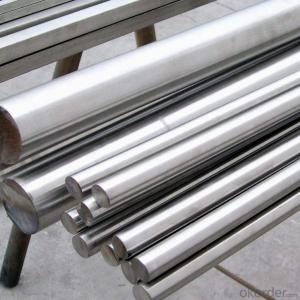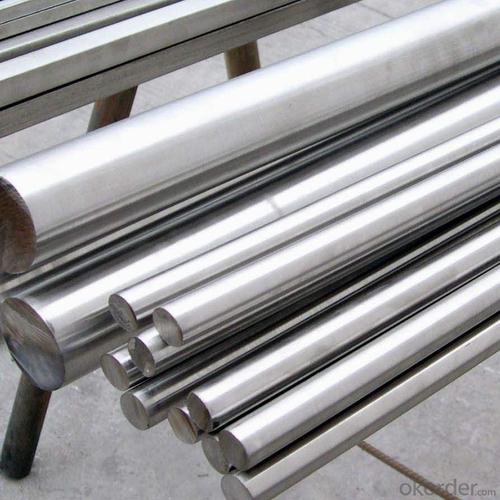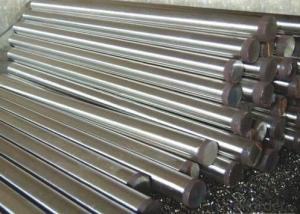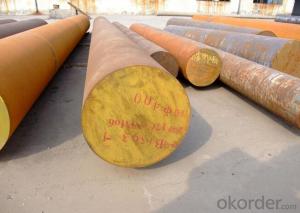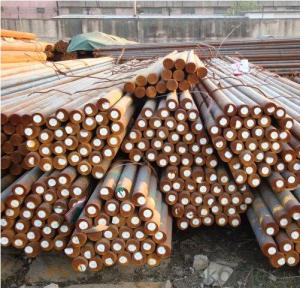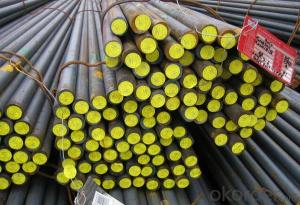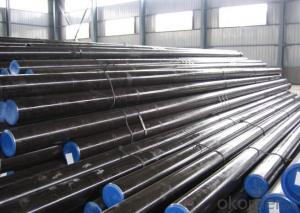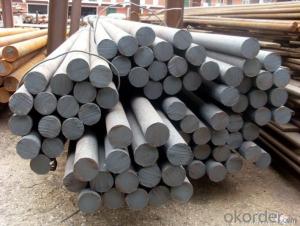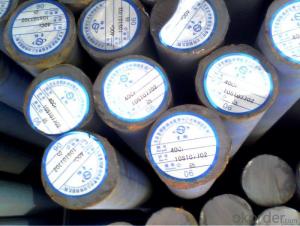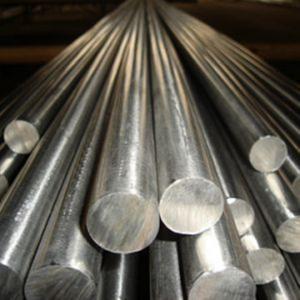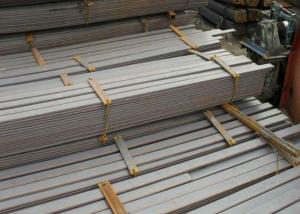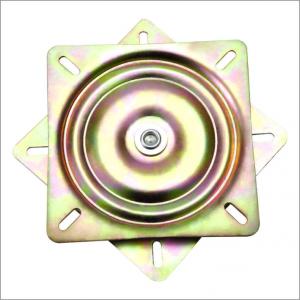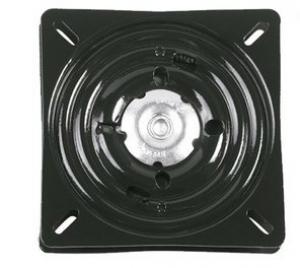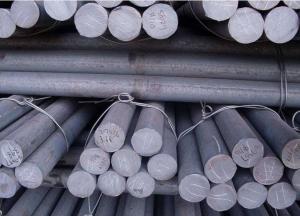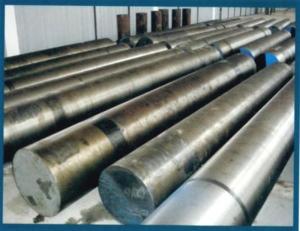Special Steel Alloy Steel Round Bar SAE8620
- Loading Port:
- China main port
- Payment Terms:
- TT OR LC
- Min Order Qty:
- 30 m.t.
- Supply Capability:
- 10000 m.t./month
OKorder Service Pledge
OKorder Financial Service
You Might Also Like
Specification
Product Information
1 Standards and Chemical Composition:
BS | AISI | JIS | DIN |
850M20 | SAE8620 | SNCCM220(H) | 21NiCrMo2 1.6523 |
C | Si | Mn | P | S | Cr | Ni | Mo |
0.18-0.23 | 0.15-0.35 | 0.70-0.90 | ≤0.035 | ≤0.035 | 0.4-0.6 | 0.4-0.7 | 0.15-0.25 |
2 Brief Introduction:
Dimension | 14-350mm |
Length | 2-13m or as per your request |
Delivery condition | Hot rolled |
Heat Treatment | Normalizing, Annealing, Quenching |
Packing | Standard seaworthy packing or according to your requirements |
Product Show

Workshop Show
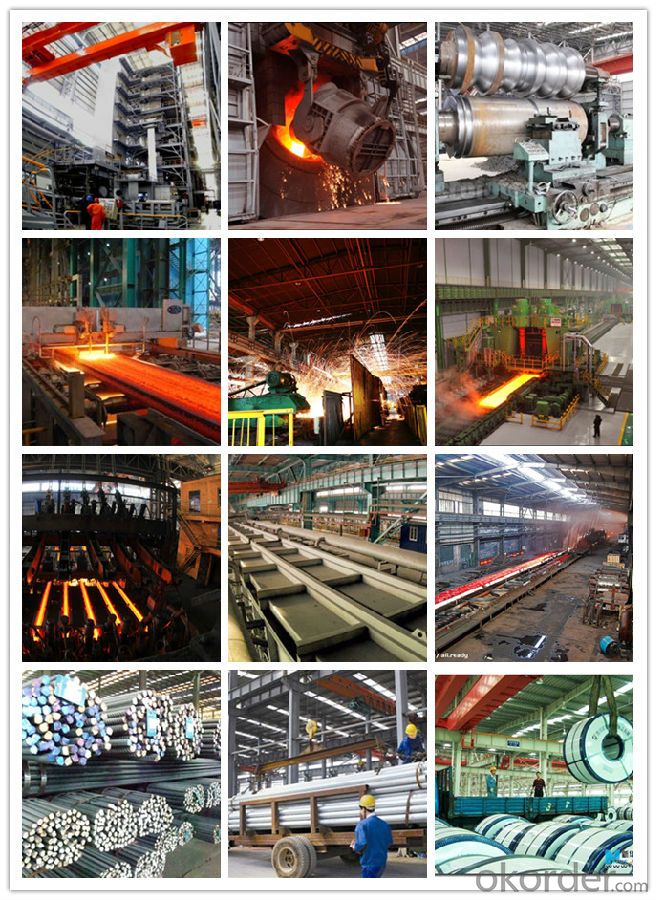
Shipping
1. FedEx/DHL/UPS/TNT for samples, Door-to-Door;
2. By Air or by Sea for batch goods, for FCL; Airport/ Port receiving;
3. Customers specifying freight forwarders or negotiable shipping methods!
Delivery Time: 3-7 days for samples; 5-25 days for batch goods.
Payment Terms
1.Payment: T/T, L/C, Western Union, MoneyGram,PayPal; 30% deposits; 70% balance before delivery.
2.MOQ: 1pcs
3.Warranty : 3 years
4.Package Informations: 1) EXPORT, In 20 feet (GW 25 ton) or 40 feet Container (GW 25 ton)
2)as customer's requirement
Why choose us?
(1) The leading exporter in China special steel industry.
(2) Large stocks for various sizes, fast delivery date.
(3) Good business relationship with China famous factories.
(4) More than 7 years steel exporting experience.
(5) Good after-sales service guarantee.
- Q: Can special steel be used in the nuclear power industry?
- Yes, special steel can be used in the nuclear power industry. Special steel is often used for components such as reactor pressure vessels, steam generators, and fuel cladding in nuclear power plants. Special steel's high strength, resistance to corrosion, and ability to withstand high temperatures make it suitable for the demanding conditions and safety requirements of the nuclear power industry.
- Q: How is shock-resistant alloy steel used in the production of impact-resistant parts?
- Shock-resistant alloy steel is used in the production of impact-resistant parts due to its high strength and ability to withstand sudden impact forces without fracturing or deforming. This steel is specifically designed to absorb and disperse energy, making it ideal for applications where parts are exposed to repeated impacts or high-stress environments. By using shock-resistant alloy steel, manufacturers can create durable and reliable impact-resistant parts that can withstand heavy loads, reduce the risk of failure, and increase the overall safety and longevity of the component or equipment.
- Q: What are the main environmental impacts of special steel production?
- The main environmental impacts of special steel production include high energy consumption, significant greenhouse gas emissions, and the generation of large amounts of air and water pollution. The production process requires immense amounts of energy, primarily from fossil fuels, leading to the release of carbon dioxide and other greenhouse gases, contributing to climate change. Additionally, the production of special steel involves the use of various chemicals and the generation of hazardous waste, which can contaminate air and water sources, harming ecosystems and human health. Efforts are being made to mitigate these impacts through improved technologies and practices, such as energy efficiency measures and waste management systems, to minimize the environmental footprint of special steel production.
- Q: Can special steel be used for making surgical instruments?
- Yes, special steel can be used for making surgical instruments. Special steel, also known as surgical steel or medical-grade steel, is specifically designed to meet the high standards required for medical and surgical applications. It is highly resistant to corrosion, has excellent strength and durability, and can withstand repeated sterilization processes without losing its properties. Surgical instruments made from special steel are known for their precision, reliability, and ability to maintain a sharp cutting edge. These instruments are essential in various surgical procedures, including but not limited to, cutting, dissecting, manipulating, and suturing tissues. The use of special steel ensures that surgical instruments are safe, hygienic, and suitable for use in medical environments.
- Q: What are the requirements for special steel used in high-pressure applications?
- The requirements for special steel used in high-pressure applications typically include high strength, excellent resistance to corrosion and oxidation, good weldability, and the ability to withstand extreme temperatures and pressures without deformation or failure. Additionally, the steel should have a high level of toughness to withstand impact and fatigue loads, as well as good dimensional stability to ensure proper sealing and performance in high-pressure environments.
- Q: What are the different methods of surface shot blasting for special steel?
- There are several methods of surface shot blasting for special steel, including wheel blasting, air blasting, and centrifugal blasting. Wheel blasting involves using a rotating wheel to propel abrasive particles onto the steel surface, while air blasting uses compressed air to propel the particles. Centrifugal blasting involves a spinning rotor that propels the particles onto the steel surface. These methods help remove rust, scale, and other contaminants from the steel surface, preparing it for further treatment or coating.
- Q: What are the different methods for improving the corrosion resistance of stainless special steel?
- There are several methods for improving the corrosion resistance of stainless special steel. Some of the common methods include alloying the steel with elements such as chromium, nickel, and molybdenum, which enhance its resistance to corrosion. Another method is passivation, which involves treating the steel with an acid solution to remove any surface contaminants and create a protective oxide layer. Coating the steel with materials like paint, powder coating, or electroplating can also improve its corrosion resistance. Additionally, proper cleaning and maintenance practices, such as regular removal of dirt and debris, can help prevent corrosion and maintain the steel's resistance over time.
- Q: How does special steel respond to welding?
- Alloy steel, also known as special steel, possesses distinct characteristics that impact its welding response. Unlike regular carbon steel, special steel incorporates additional alloying elements like chromium, nickel, or molybdenum, which augment its strength, resistance to corrosion, and heat endurance. In terms of welding, special steel generally exhibits favorable behavior due to its elevated tensile strength and toughness. However, a few considerations should be borne in mind. The elevated carbon content in certain special steels can result in cracking or brittleness during the welding process. To prevent this, preheating the material and employing appropriate welding techniques are imperative. Selecting the appropriate welding method based on the specific type of special steel being utilized is crucial. For example, gas tungsten arc welding (GTAW) or tungsten inert gas (TIG) welding is commonly favored for welding stainless steel due to its ability to precisely control heat input and produce high-quality welds with minimal distortion. Additionally, special steel often necessitates the use of specialized welding consumables, like electrodes or filler wires, specifically formulated for the particular alloy composition. These consumables aid in maintaining the desired mechanical properties and preventing the formation of brittle phases in the weld. Post-weld heat treatment is also vital for certain special steels as it alleviates residual stresses and enhances the overall properties of the weldment. This process can involve annealing, normalizing, or tempering, depending on the specific steel grade and application requirements. In conclusion, special steel responds favorably to welding, but it is crucial to consider its alloy composition, carbon content, and specific welding techniques. By adhering to proper welding procedures, employing appropriate consumables, and implementing necessary heat treatments, high-quality welds can be achieved, guaranteeing the integrity and performance of the special steel components.
- Q: What are the common heat treatment methods used for special steel?
- Special steel can undergo various heat treatment methods to enhance its mechanical properties and performance. Some commonly used techniques include: 1. Annealing: By heating the steel to a specific temperature and gradually cooling it, internal stresses are relieved and a refined microstructure is formed. This process improves the steel's machinability and ductility. 2. Normalizing: The steel is heated above its critical point and then cooled in still air. This method refines the grain structure, enhances toughness, and improves strength. 3. Quenching: Rapid cooling is achieved by immersing the steel in a quenching medium like water, oil, or polymer. It increases hardness and strength by forming a hard martensitic structure. However, quenching may introduce internal stresses and decrease toughness, so tempering is often performed afterwards. 4. Tempering: Quenched steel is reheated to a specific temperature and gradually cooled. This relieves internal stresses, reduces hardness, and improves toughness and ductility. Tempering also enhances resistance to brittle fracture. 5. Austempering: Steel is quenched to a temperature slightly above its martensitic transformation range, followed by holding it at this temperature until austenite transforms into bainite. This unique microstructure offers a combination of high strength and good toughness. 6. Martempering: Similar to austempering, but the steel is quenched just below its martensitic transformation range and held at that temperature until transformation is complete. Martempering produces a microstructure with improved strength and toughness compared to conventional quenching. These heat treatment methods are widely used to tailor special steel properties according to specific applications and requirements. The choice of method depends on factors such as desired mechanical properties, steel composition, and the intended use of the final product.
- Q: What are the different surface protection methods for special steel?
- There are several surface protection methods for special steel, including galvanization, coating with protective paints or varnishes, electroplating, and applying corrosion-resistant alloys or metals. These methods help prevent rust, corrosion, and other forms of damage, ensuring the longevity and durability of the special steel.
Send your message to us
Special Steel Alloy Steel Round Bar SAE8620
- Loading Port:
- China main port
- Payment Terms:
- TT OR LC
- Min Order Qty:
- 30 m.t.
- Supply Capability:
- 10000 m.t./month
OKorder Service Pledge
OKorder Financial Service
Similar products
Hot products
Hot Searches
Related keywords
